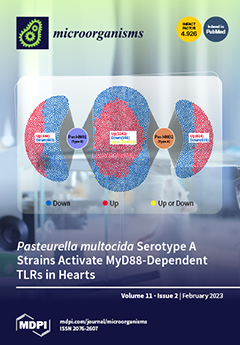Biochar is an important soil amendment that can enhance the biological properties of soil, as well as nitrogen (N) uptake and utilization in N-fertilized crops. However, few studies have characterized the effects of urea and biochar application on soil biochemical traits and its effect on paddy rice. Therefore, a field trial was conducted in the early and late seasons of 2020 in a randomized complete block design with two N levels (135 and 180 kg ha
−1) and four levels of biochar (0, 10, 20, and 30 t ha
−1). The treatment combinations were as follows: 135 kg N ha
−1 + 0 t B ha
−1 (T1), 135 kg N ha
−1 + 10 t B ha
−1 (T2), 135 kg N ha
−1 + 20 t B ha
−1 (T3), 135 kg N ha
−1 + 30 t B ha
−1 (T4), 180 kg N ha
−1 + 0 t B ha
−1 (T5), 180 kg N ha
−1 + 10 t B ha
−1 (T6), 180 kg N ha
−1 + 20 t B ha
−1 (T7) and 180 kg N ha
−1 + 30 t B ha
−1 (T8). The results showed that soil amended with biochar had higher soil pH, soil organic carbon content, total nitrogen content, and mineral nitrogen (NH
4+-N and NO
3−-N) than soil that had not been amended with biochar. In both seasons, the 20 t ha
−1 and 30 t ha
−1 biochar treatments had the highest an average concentrations of NO
3–-N (10.54 mg kg
−1 and 10.25 mg kg
−1, respectively). In comparison to soil that had not been treated with biochar, the average activity of the enzymes urease, polyphenol oxidase, dehydrogenase, and chitinase was, respectively, 25.28%, 14.13%, 67.76%, and 22.26% greater; however, the activity of the enzyme catalase was 15.06% lower in both seasons. Application of biochar considerably increased the abundance of ammonia-oxidizing bacteria (AOB), which was 48% greater on average in biochar-amended soil than in unamended soil. However, there were no significant variations in the abundances of ammonia-oxidizing archaea (AOA) or nitrite-oxidizing bacteria (NOB) across treatments. In comparison to soil that had not been treated with biochar, the average N content was 24.46%, 20.47%, and 19.08% higher in the stem, leaves, and panicles, respectively. In general, adding biochar at a rate of 20 to 30 t ha
−1 with low-dose urea (135 kg N ha
−1) is a beneficial technique for improving the nutrient balance and biological processes of soil, as well as the N uptake and grain yield of rice plants.
Full article






